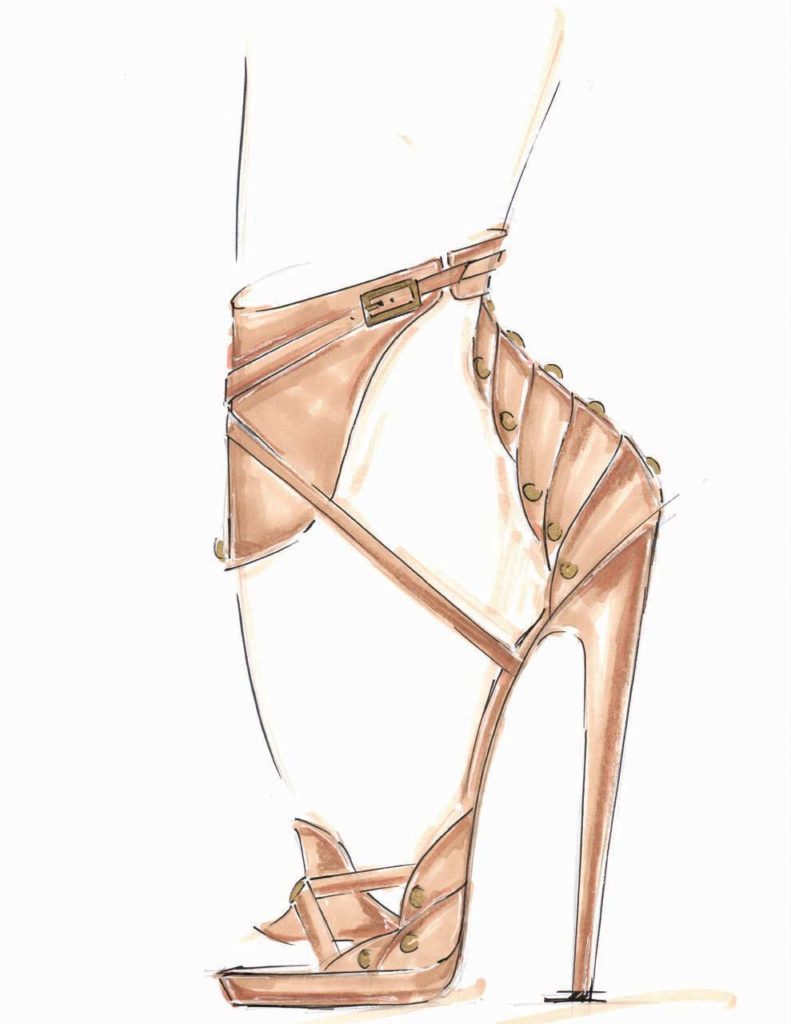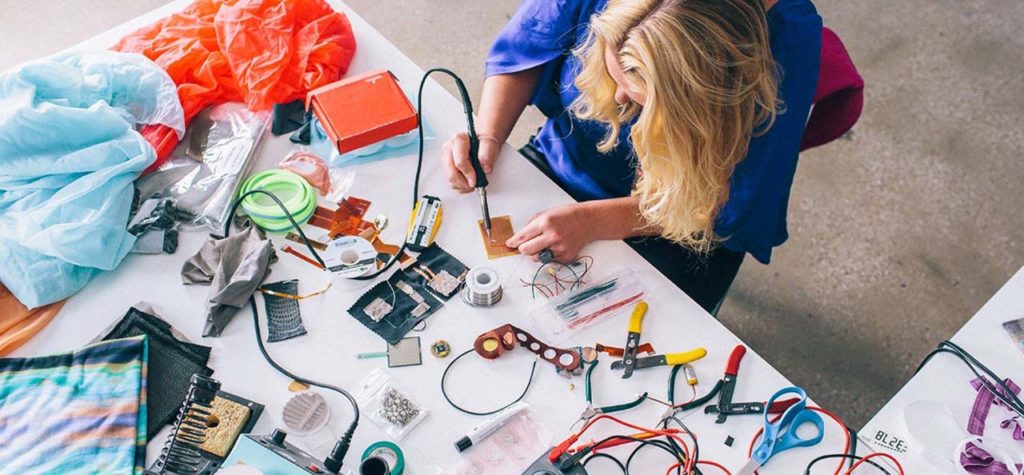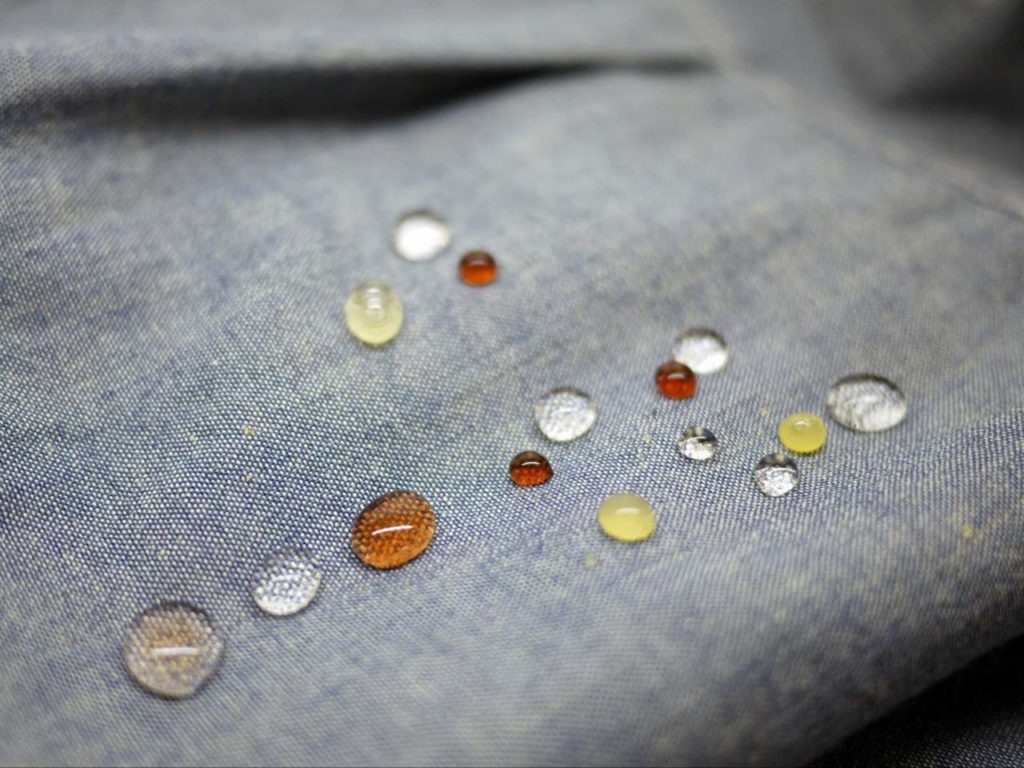This forward-looking Brooklyn “fashion scientist” sees beauty in the integration of high-tech
and haute couture
by James Tate
California native Dr. Amanda Parkes—designer, entrepreneur, surfer, and PhD—is a New Yorker, but her career, which includes a constellation of startups and manufacturing consulting gigs, keeps her on the proverbial road between the West Coast, Asia, and Europe, where she spreads the gospel that high-tech and haute couture can and must live happily together.

From her Brooklyn startup, Skinteractive Studio—devoted to, as its site reads, “developing fashion technology and hi-tech textile projects for use in areas ranging from performance to medicine”—Parkes focuses on areas of fashion often ignored by traditional tech venture capital funding. Her ambition, she explained, is to create the functionality of circuits as fiber (literally computers made of clothing) or, depending on how one looks at it, the other way around. Parkes describes this using the term “biomedia” (defined by Eugene Thacker of the Georgia Institute of Technology as “particular mediations of the body—optimizations of the biological—in which ‘technology’ appears to disappear altogether”). Put simply, it is the relationship between the physical and digital worlds.
“My focus, as opposed to strictly electronics, is on materials and fibers moving into the more natural and nanotech world,” she explained.
While most have seen smartwatches and activity trackers, and some readers may even have encountered now-defunct Google Glass, Parkes would like to reclaim, she said, the entire body from its native five senses.
“Sports technology currently offers, for example, sweat sensors, along with a lab on a chip that looks at hydration and glucose,” she said. “What I’m trying to do is make that chip an actual fiber. It’s the next-gen of wearables. We’re getting there, but there are a lot of moving parts from very different industries that have to come together.”

Referring to herself a “fashion scientist,” Parkes has been working with wearable tech for a long time. After receiving her PhD from MIT in Boston, she entered the biomedia and design industry 13 years ago. “I remember when wearables looked like a computer threw up on a jacket,” she recalled, “and understandably, the fashion industry didn’t want anything to do with that cyborg aesthetic. Now we’re in a place where things are more invisible, and we can start to have a true crossover.”
Using New York City as her hub, Parkes traverses industries whose intersection is still making its way into the awareness of investors and consumers. “People often ask me who’s going to ‘win’ wearables, in the sense of what’s going to be the defining product,” she said. “But fashion branding is [actually] about collections and changing products. Apple can market the same iPhone to a 70-year-old man and a 14-year-old girl, but you won’t find a single fashion product that would be the same between those two markets. In the way that a company like LVMH (Moët Hennessy Louis
Vuitton SE) owns different brands that have different identities…that’s the success model in fashion, as opposed to an Apple, that has a singular identity.”
There is, she added, a balancing act in trying to create identity inside the cultures of fashion and tech. “A company that I work with, Thesis Couture, produces a stiletto. Its founder, Dolly Singh, was Elon Musk’s head of talent at SpaceX. She was frustrated by having amazing technology around her but still having to ask why her shoes hurt, and discovered that high heels haven’t had any innovation since they were created in the 1940s.” Singh gathered a team to re-architect the stiletto, and brought Parkes on as head of tech. Dropel Fabrics, another company that Parkes consults with, produces a hydrophobic (completely moisture-resistant) nanotech coating that can be applied to fibers like cotton. “The fiber retains its feel, but you can throw a glass of red wine on it and it’ll roll off.”
This fusion of smart devices and ideally heirloom fashion design is at odds with the gadget life cycle that many have come to expect. Ringly, a New York startup with whom Parkes has worked, makes wearable, enduring tech devices integrated with jewelry. (“Real metal, real stones,” Parkes said. “Something that can sit in the jewelry case at Barneys. A lot of this innovation goes in the opposite direction of the Silicon Valley values system.”

For all her travel (she has managed collaborations in LA, San Francisco, Switzerland, and in China, Singapore, and Italy), Parkes’s own future remains committed to Brooklyn. “New York has a very different perspective on the kinds of companies that get developed, versus Silicon Valley,” she said.
“It would be hard to create good fashion-forward businesses there. Brooklyn itself is a wonderful creative hub of makers of all kinds. People come here with the very best creative ideas and spirits. You can always hire the best people here.”

Skinteractive Studio
skinteractivestudio.wordpress.com

